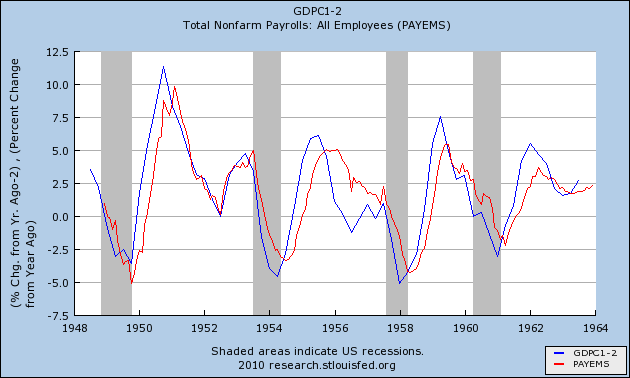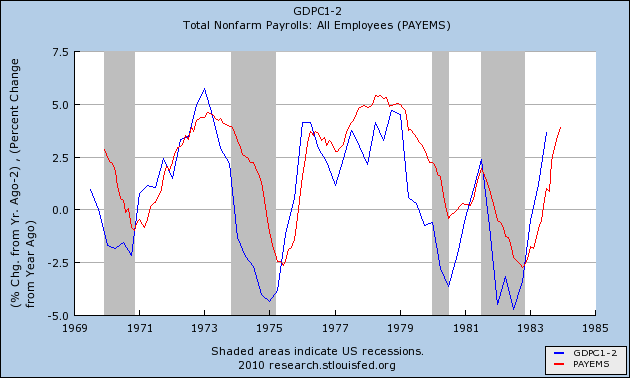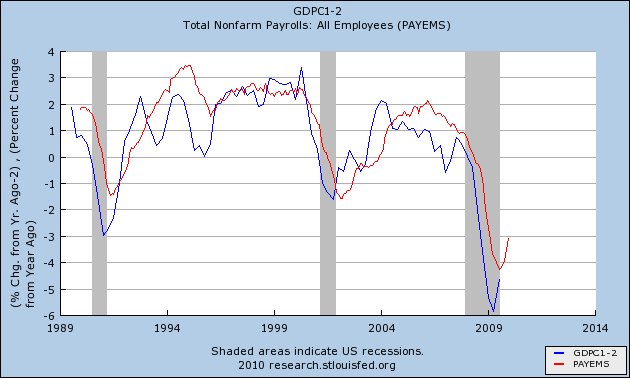Tomorrow the advanced estimate of 4th Quarter 2009 GDP will be released, and the likelihood is that all of the popular blogs will be trumpeting that the number is but a "blip," taking their cue from Professor Krugman.
It is well to remember that, regardless of the source of GDP growth, whenever that growth has been in excess of 2.3% a year, it has always led to job growth. Below is the evidence in graphic form. Per prior discussions of "Okun's Law," the blue line represents YoY GDP growth, minus 2% (e.g., 2% YoY GDP growth - 2% = 0% on the graph). The red line is YoY nonfarm payrolls, on the same scale. Here is the immediate post-WW2 period:

Here are the 1970s and early 1980s recessions:

Here is the era of "jobless recoveries" up until the present:

Notice how well the red line tracks the blue line, and how peaks and troughs are typically ~2% or less apart.
To refresh your memory, here is GDP for the first 3 quarters of 2009:
-6.4% (Q1 2009)
-0.7% (Q2 2009)
+2.2% (Q3 2009)
Even if there is a blowout good number tomorrow (that stands up to subsequent revisions), we're not going to hit +2% YoY GDP growth as of the end of 2009. But beginning this quarter, the goal is much more doable, as 2 quarters of +3.3% growth will be sufficient.
Also, keep in mind that the above graph is for YoY payrolls. A trough is made somewhere in the middle of the year where YoY growth = 0%. Beginning with the 1948 recession, here is the lead time between troughs in jobs and YoY GDP growth in excess of 2%(in descending order, in months):
-9 -8 -6 -5 -4 -4 -3 -2 -2 +7
In case you weren't sure, the +7 outlier is the extremely weak "jobless recovery" of 2002-2003. Even the 1992 "jobless recovery" fit the above pattern.
Notice also that the 1980 "blip" used by Prof. Krugman and others as their exemplar nevertheless generated several quarters of actual job growth.
Assuming the worst case scenario (of 2002-03), if 1Q 2010 is 2.3% or more higher than 1Q 2009 GDP, YoY payrolls will show no losses by August 2010, suggesting a trough in February or March. Under any other scenario, jobs are at their trough now (or revisions will show that we are already past it). Blip or no Blip.